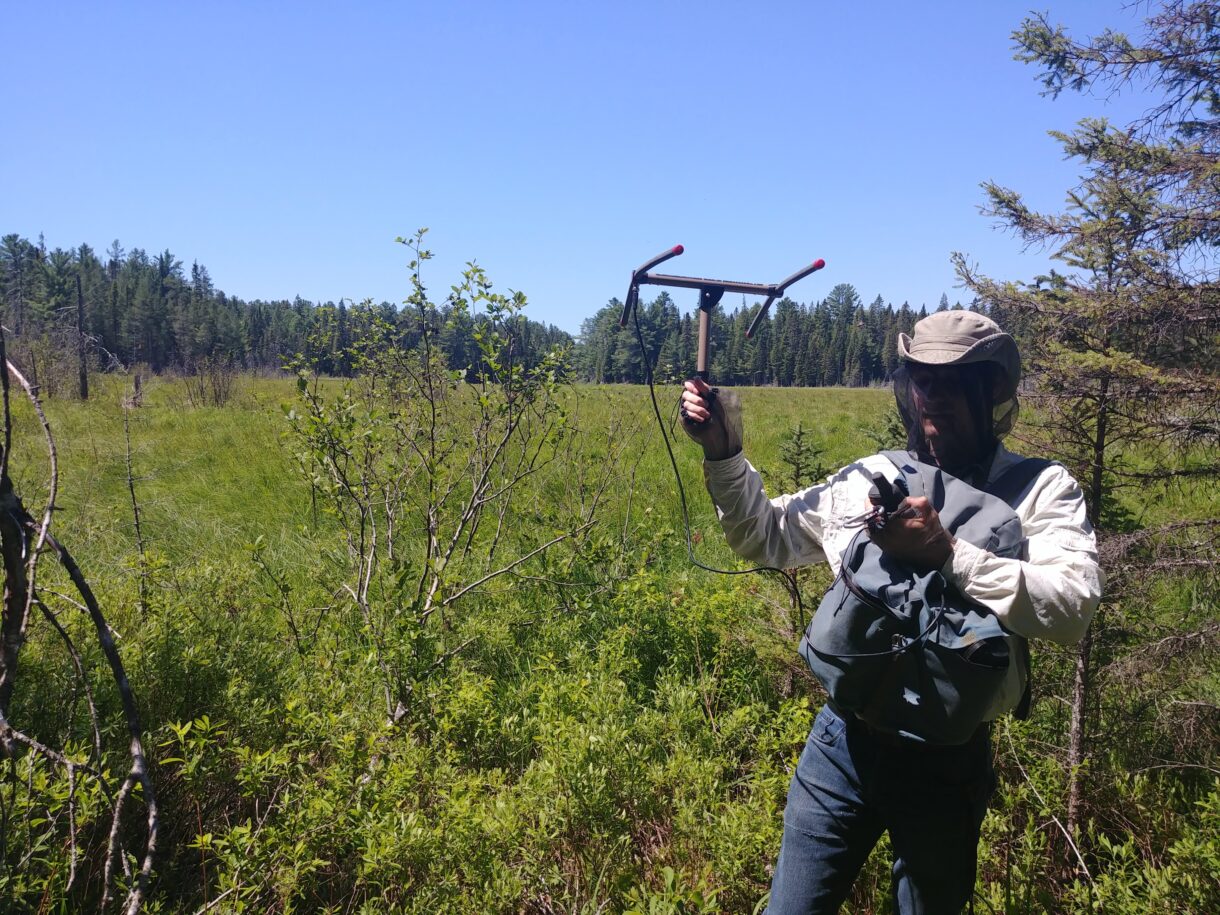Matthew Fuirst is the most recent PhD student to join the long-term project on Algonquin’s Canada Jays. Here he writes about how the team is investigating the jay’s summer ecology.
—-
Many are familiar with the Canada Jays of Algonquin Provincial Park. Canada Jays are boreal residents in the park and rely on cached food items for their over-winter survival and late-winter reproduction. These jays silently roam the forests and often in winter, when the landscape is frozen over, are regular visitors to popular sites in the park such as Opeongo Road, the Mew Lake campground, the Mizzy Lake trail, the Algonquin Logging Museum, and even the Wildlife Research Station. Canada Jays visit these sites in winter as a way to obtain supplemental food provided by park visitors. But, have you ever noticed that the jays seem to “vanish” in the summer? Why are these birds seen far less often during the spring and summer months than during fall and winter?

Joschka McLeod uses an antennae and receiver to track a Canada Jay along Hermit Creek. GPS points are collected using a handheld Garmin device once jays are located. [Photo by Matthew Fuirst]
While the Canada Jay ecology project has shed light on many aspects of this population, there is still very little known about their summer ecology. In the spring of 2020, PhD candidate Matthew Fuirst and undergraduate thesis student Joschka McLeod from the University of Guelph decided to explore where adult jays go during the warmer months using radio-telemetry techniques. Radio-telemetry technology gives ecologists the ability to track animals from afar in order to determine their movements. In April of 2020, 12 individuals across 8 territories along the Highway 60 corridor were tagged with radio-transmitters. Each of these tags has a unique radio frequency that can be detected with an antennae and receiver box up to 5 kilometres away. From early May until the end of July, Matthew and Joschka tracked each of the 12 jays twice a week to obtain locations of the jay’s hidden lives during the summer.
Fascinatingly, most of the Canada jays spent a majority of their time outside of their breeding territory. This is presumably because during the spring and summer the environment thaws and wetlands and other habitats become available for foraging. Some adults were often seen up to 1.5 kilometres away from their territory. That’s a long ways to go for a foraging trip! We observed Canada jays eating food items such as American toads, spotted salamanders, and toxic mushrooms. We look forward to sharing more about the jay’s summer ecology as we continue our investigations!

LEFT: Matthew Fuirst bands and radio-tags a new breeding adult on the TDS North territory in early spring. [Photo by Joschka McLeod] RIGHT: An adult Canada Jay with leg bands on the Mizzy Lake Trail. [Photo by Matthew Fuirst]

